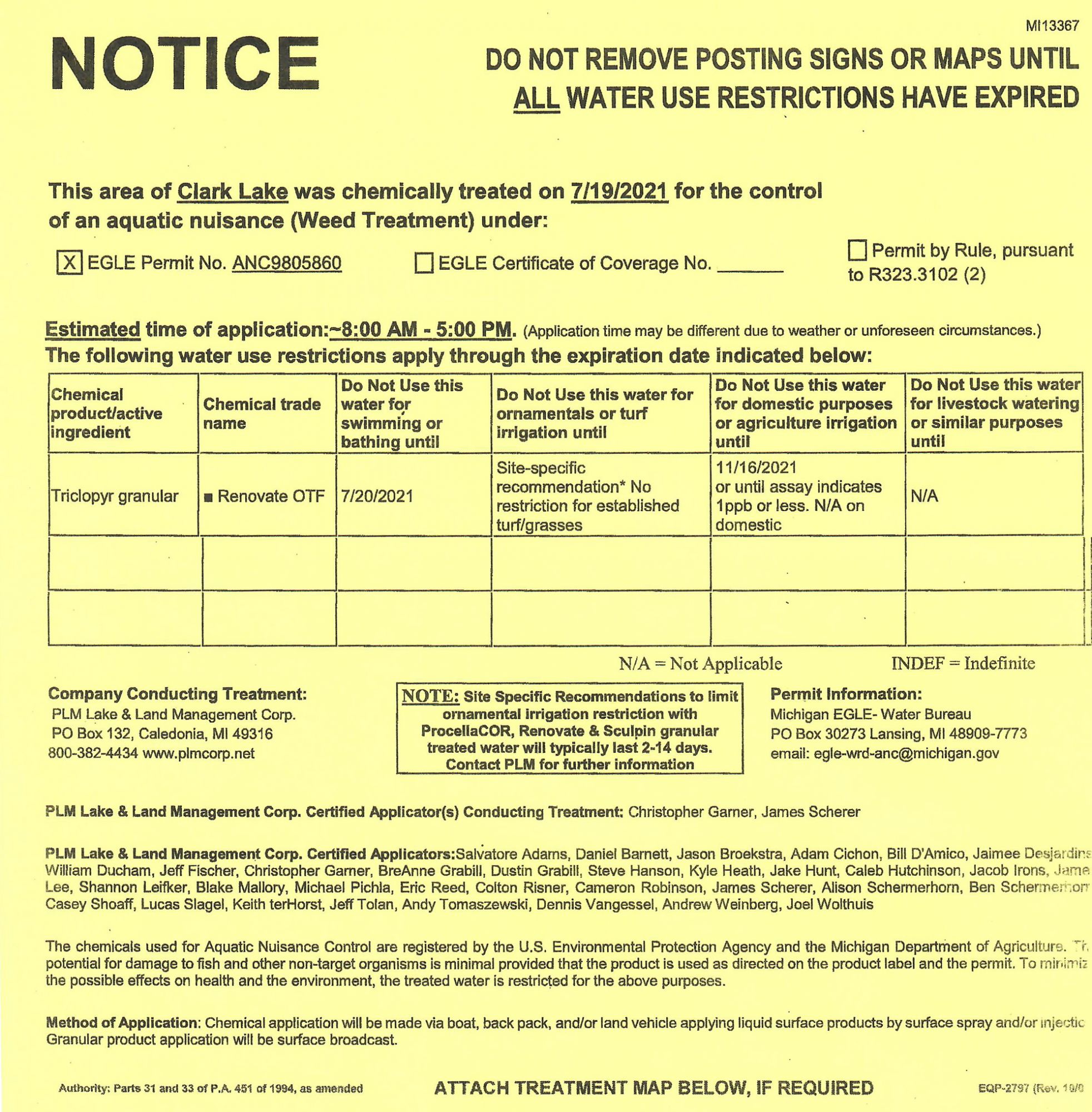PLM, the company contracted to treat Clark Lake’s aquatic invasive species, is here today. Notices have been posted in affected areas.
Today’s treatment is targets two species that have reappeared–hybrid Eurasian water milfoil and starry stonewort. The map below shows where PLM spotted these two invaders during a survey earlier this season.
 PLM is using a different product to tamp down starry stonewort for this visit. The expectation is it will provide longer lasting effectiveness against this invader. Although it looks like a weed, starry stonewort is actually an algae. Like other invasive species, it can raise havoc if not controlled.
PLM is using a different product to tamp down starry stonewort for this visit. The expectation is it will provide longer lasting effectiveness against this invader. Although it looks like a weed, starry stonewort is actually an algae. Like other invasive species, it can raise havoc if not controlled.
Lakes that didn’t control invaders found boating, fishing and other recreational uses adversely affected— and property values diminished. Clark Lake’s lakefront property owners petitioned Columbia Township to form a special assessment district (SAD) to thwart the problem.
View the June 24th post by clicking here. This website devotes an entire section to efforts to control aquatic invasive species in Clark Lake, going back to September 2014. You can visit it by clicking here.

Explanation of column that says “Do not use this water for domestic purposes or agriculture irrigation until…” In that column is the notation that begins with the date “11/16/2021 or until assay indicates 1 ppb or less. N/A on domestic.”
PLM provides this amplification:
The domestic purposes would only be if the lake water is used for domestic purposes, which would include bathing, dishes and any indoor water use. That’s not likely to happen because the County does not issue permits to use lake water in that manner.
Agricultural irrigation refers to farming operations, which again does not apply to anyone on the lake.
Given that such a small area of the lake and total water volume was treated, the 1 ppb threshold for the treated areas would be reached in a minimal amount of time.
Most treatments were done far enough from shore that residents are not impacted by any of the restrictions on the signs as they only apply to within 100 feet of the treated area










